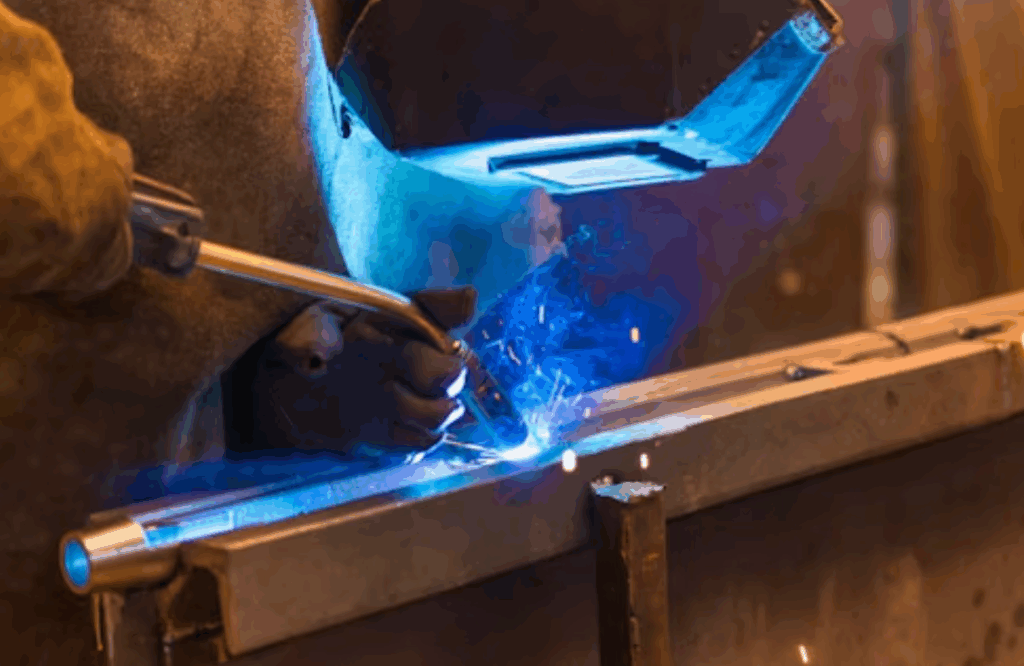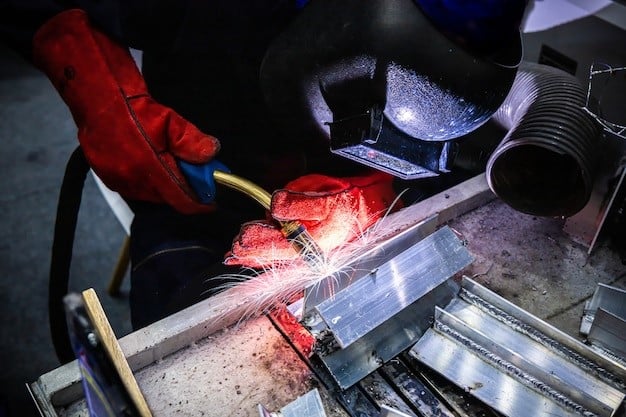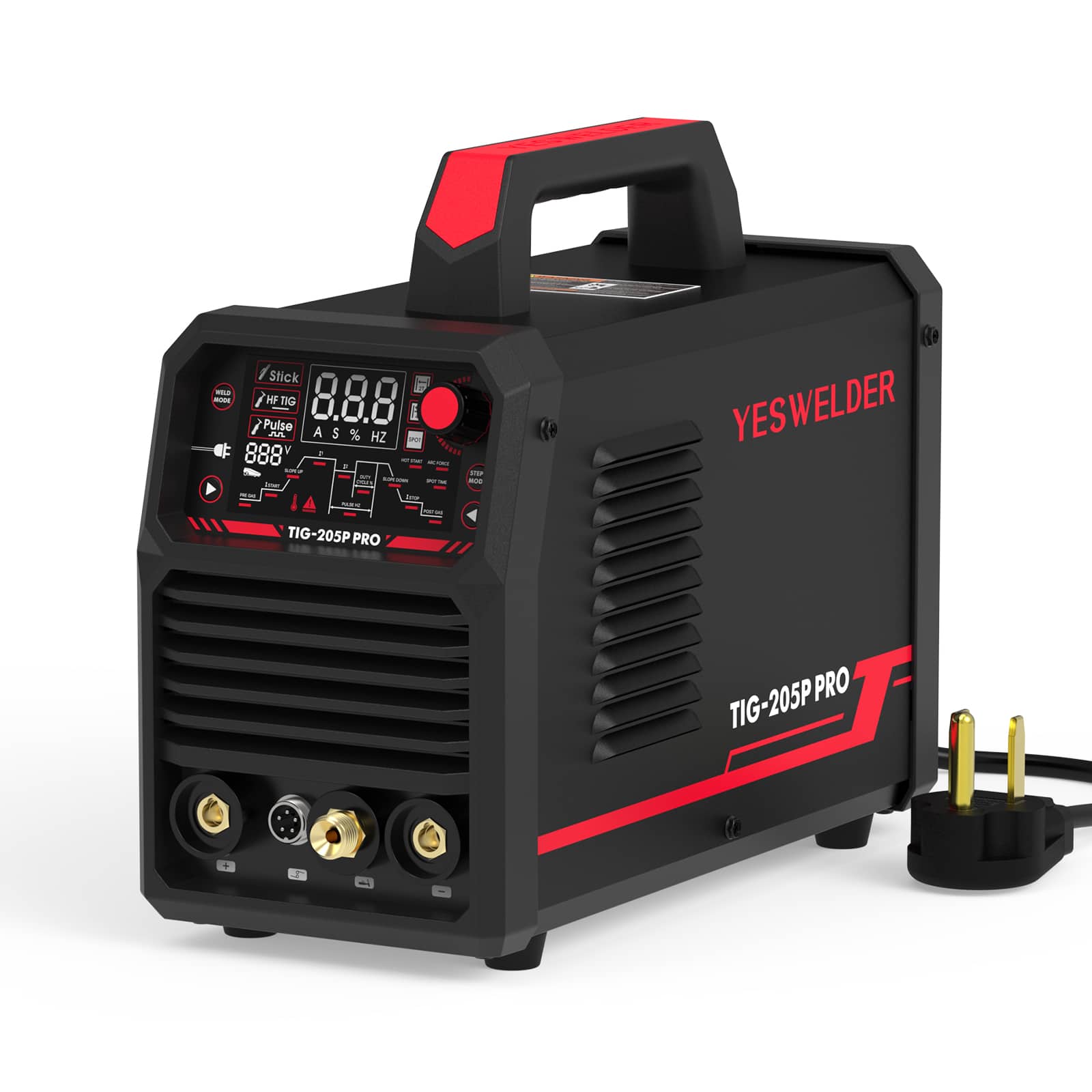Welding is one of the most fundamental processes in metal fabrication. Whether you’re building a ship, repairing a vehicle, or constructing a skyscraper, chances are you’re using some form of arc welding type to get the job done.
Arc welding is the backbone of modern industry, a versatile process that uses electricity to join metals by melting them together at high temperatures. Over the years, several types of arc welding have evolved, each with its own unique advantages, applications, and techniques.
In this complete guide, we’ll break down the most common arc welding types, explain how they work, and help you understand which one is best suited for your next project.

What Is Arc Welding?
Arc welding is a process that uses an electric arc to create intense heat, enough to melt metal at the joint between two workpieces. Once the molten pool cools, it solidifies into a strong, permanent bond.
The basic setup for arc welding includes:
- A power source (to generate the arc).
- An electrode (to carry current or provide filler metal).
- A work clamp (to complete the electrical circuit).
- Shielding gas or flux (to protect the molten metal from contamination).
What makes arc welding so powerful is its simplicity and adaptability. It can be performed manually, semi-automatically, or fully automated, making it suitable for small workshops and massive industrial operations alike.
How Arc Welding Works
Here’s the basic principle:
- An electric current (AC or DC) passes through an electrode.
- When the electrode tip is close to the metal surface, it forms an arc.
- The arc generates heat, temperatures can exceed 6,000°F (3,300°C).
- The metal melts and fuses together, forming the weld.
- Shielding gas or flux protects the molten pool from oxygen and nitrogen in the air.
The result is a strong, durable weld joint that can withstand tremendous stress, vibration, and heat.
Main Arc Welding Types
There are over a dozen arc welding processes, but the following are the most widely used across industries.
1. Shielded Metal Arc Welding (SMAW) – Stick Welding
Overview:
One of the oldest and most versatile welding methods, SMAW uses a consumable electrode coated with flux. The electric arc forms between the electrode and the workpiece, melting both and forming a strong joint.
As the electrode melts, the flux coating produces gases and slag that protect the weld pool from contamination.
Advantages:
- Simple equipment and low cost.
- Works well outdoors and in windy conditions.
- Effective on rusty, dirty, or painted metals.
Disadvantages:
- Slower deposition rate compared to MIG or TIG.
- Requires frequent electrode replacement.
- Produces more spatter and slag.
Common Applications:
- Construction and repair work.
- Shipbuilding.
- Pipeline welding.
2. Gas Metal Arc Welding (GMAW) – MIG Welding

Overview:
MIG (Metal Inert Gas) welding uses a continuous wire electrode fed through a welding gun, along with a shielding gas (like argon or CO₂) to protect the weld pool.
The result is a fast, clean, and efficient welding process with minimal slag or spatter.
Advantages:
- High productivity and speed.
- Cleaner welds requiring little post-weld cleanup.
- Easy to learn and operate.
Disadvantages:
- Requires shielding gas — less effective outdoors.
- Equipment cost is higher than stick welding.
Common Applications:
- Automotive manufacturing.
- Fabrication shops.
- General metalwork and thin-sheet welding.
3. Gas Tungsten Arc Welding (GTAW) – TIG Welding

Overview:
TIG welding uses a non-consumable tungsten electrode to produce precise, high-quality welds. A separate filler rod may be used when needed, and a shielding gas (usually argon) protects the molten metal.
This process allows unmatched control and produces clean, aesthetically pleasing welds with superior strength.
Advantages:
- Extremely clean and precise welds.
- Works on a variety of metals, including aluminum, stainless steel, and titanium.
- No slag or spatter.
Disadvantages:
- Slower than MIG or Stick welding.
- Requires high skill and hand coordination.
Common Applications:
- Aerospace and aviation.
- Food processing equipment.
- Pipe and tube welding.
4. Flux-Cored Arc Welding (FCAW)
Overview:
A close cousin of MIG welding, Flux-Cored Arc Welding uses a tubular wire filled with flux material instead of a solid wire. The flux creates a protective gas shield when melted, sometimes eliminating the need for external gas.
Advantages:
- Great for thick materials and outdoor use.
- High deposition rates for faster production.
- Strong, durable joints suitable for structural steel.
Disadvantages:
- Produces more slag than MIG.
- Can generate more smoke and fumes.
Common Applications:
- Shipbuilding and bridge construction.
- Heavy machinery and structural steel fabrication.
5. Submerged Arc Welding (SAW)
Overview:
In Submerged Arc Welding, the arc and molten pool are completely covered by a layer of granular flux. This prevents spatter and limits UV radiation exposure, making it ideal for heavy-duty applications.
Advantages:
- Deep penetration and high deposition rates.
- Very clean and consistent welds.
- Suitable for thick materials.
Disadvantages:
- Limited to horizontal or flat positions.
- Equipment is large and expensive.
Common Applications:
- Large pressure vessels.
- Pipeline welding.
- Ship hulls and heavy fabrication.
6. Plasma Arc Welding (PAW)
Overview:
Plasma Arc Welding is similar to TIG but uses a constricted plasma arc that’s much hotter and more focused. This allows for deeper penetration and faster travel speeds.
Advantages:
- Extremely precise and stable arc.
- Works on thin and thick materials alike.
- Excellent for automation.
Disadvantages:
- Complex and expensive equipment.
- Requires skilled operators.
Common Applications:
- Aerospace components.
- Medical and micro-welding.
- Stainless steel fabrication.
7. Carbon Arc Welding (CAW)
Overview:
One of the earliest arc welding types, Carbon Arc Welding uses a carbon electrode instead of metal. The arc heat melts the workpieces, while filler metal can be added manually.
Advantages:
- Simple setup and low cost.
- Can be used for cutting and heating as well as welding.
Disadvantages:
- Largely replaced by modern methods like MIG and TIG.
- Limited to non-critical applications.
Common Applications:
- Maintenance and repair work.
- Historical or restoration welding.
8. Stud Arc Welding
Overview:
Stud welding joins a metal fastener (like a bolt or pin) to a base metal using an arc. The process is fast and effective, commonly used to attach studs or anchors to structural components.
Advantages:
- Very quick, welds complete in milliseconds.
- High shear strength and reliability.
- No holes or backside distortion.
Disadvantages:
- Limited to specific stud sizes and materials.
Common Applications:
- Construction and building supports.
- Ship decks and bulkheads.
- Electrical panels and enclosures.
Choosing the Right Arc Welding Type
Selecting the right process depends on your material, position, and desired weld quality.
For beginners: MIG (GMAW) is the easiest to learn.
For precision: TIG (GTAW) provides the cleanest welds.
For heavy fabrication: Stick (SMAW) or Flux-Cored (FCAW) are your best bets.
For large industrial projects: Submerged Arc (SAW) delivers unmatched strength and efficiency.

Safety Tips for Arc Welding
Arc welding involves high temperatures, UV radiation, and electrical currents, safety should always come first:
- Always wear a welding helmet with proper shade level.
- Use fire-resistant gloves and clothing.
- Ensure proper ventilation to remove fumes.
- Keep work areas dry to avoid electrical hazards.
- Inspect cables, clamps, and torches regularly for damage.
No matter the project, there’s an arc welding type suited for the job. From the simplicity of stick welding to the precision of TIG and the speed of MIG, each process brings its own strengths and challenges.
Understanding the different arc welding types helps you choose the right balance between strength, speed, and control, whether you’re welding thin aluminum sheets or heavy industrial plates.
Mastering these methods not only enhances the quality of your welds but also opens doors to a wider range of professional and creative fabrication opportunities.
Suggested Conclusion
Choosing the right arc welding type is only part of the equation — finding a reliable welding equipment supplier is just as essential. Whether you need MIG, TIG, or Stick welders, a trusted supplier ensures access to high-quality machines and consumables that match your fabrication needs. From small workshops to large-scale production lines, sourcing through a dependable welding supply company helps welders achieve consistent performance, durability, and safety. Understanding each process and partnering with the right provider will keep your operation running smoothly and efficiently across every welding application.



